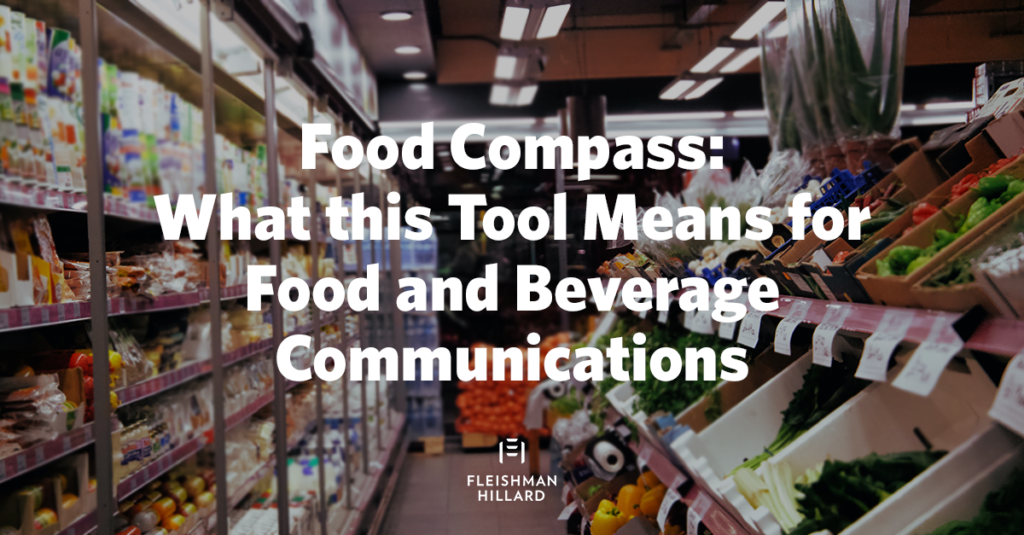Food Compass: What this Tool Means for Food and Beverage Communications
Last week, Friedman School of Nutrition Science and Policy at Tufts University released their new nutrient profiling system – Food Compass – aimed at helping consumers, food companies, restaurants and more choose and produce healthier foods, and pressure officials to create better public nutrition policies to improve health. Created by some of the leading nutrition and food researchers, Food Compass is likely to not only influence healthcare professionals’ recommendations but extend to the choices consumers make and ultimately force food and beverage companies to be more thoughtful in their production and communications.
Food Compass is meant to be a truly holistic nutrient profiling system. Others, such as the nutrition facts panel, front of pack marking of single nutrients – think disclaimers calling out products as low sodium – or even the UK’s traffic light system, all evaluate specific nutrients or processing standards. Food Compass takes a revolutionary approach and scores specific foods from one to 100 – one being unhealthiest; 100 as the healthiest – by measuring against health-relevant domains including nutrient composition, ingredients, additives, processing and more. This results in one of the most comprehensive food profiling systems in the world.
What the Means for Food, Agriculture & Beverage Marketers:
- Develop Truly Healthy Foods: As consumers demand more transparency and better understanding of the foods they consume, tools like Food Compass remove much of the confusion and misunderstanding within the nutrition landscape. This means that food and beverage manufacturers and marketers must be extremely thoughtful in their nutrition communications – rooting the products’ messaging in the true benefits the products provide.
- Think Beyond Price: Food Compass takes a systematic approach to scoring the nutritional benefits of their products and doesn’t give extra points for products being organic, non-GMO or other benefits often associated with increased nutrition (and a higher price). Simple, cost-effective foods, like tuna salad made with light mayo score in the top third of products, which will hopefully help remove barriers to good nutrition by showing that healthy diets can be achieved at nearly every budget. Food Compass can be used as a tool to demonstrate the nutrition of products without needing extra labels and claims.
- Previously Maligned Products Have Support: Certain foods that are frequently criticized are ranked higher in Food Compass than one may expect. For example, certain cuts of pork and sausages are considered appropriate for moderate consumption by Food Compass standards. Many types of 100% fruit juices are ranked in the top tier as a tool to increase vitamin and mineral consumption. This could serve as a new tool in communicating why your product fits to target audiences.
What is Missing from the Food Compass:
While Food Compass is undeniably a more holistic analysis of the nutritional impact of food and beverages, there is one critical piece missing in the equation: food’s impact on the environment. According to research conducted by FleishmanHillard’s TRUE Global Intelligence practice, consumers now make food decisions based on what is nutritionally sound and what is good for the planet. As the world enters a pivotal time in the fight against climate change and the world’s population continues to grow, it is not enough to consider what is healthiest for yourself on an individual basis but also how your decisions affect the larger food system and health of the planet.
As consumers now prioritize the health of the plant over their own personal health, using Food Compass – the most comprehensive nutrient profiling system to date – isn’t enough as food and beverage communicators. To truly breakthrough and resonate with target audiences in this space, a holistic communications strategy – that also includes the environmental impact – is needed.

